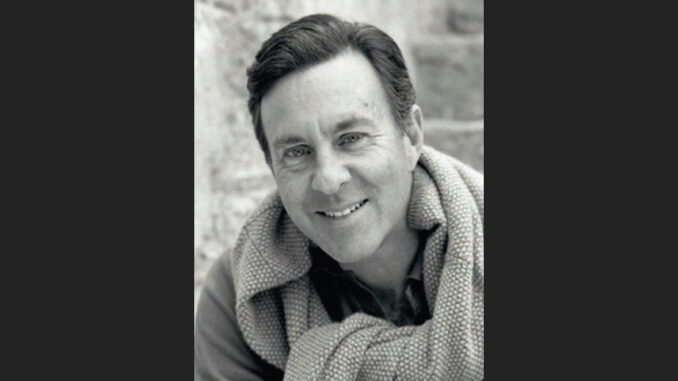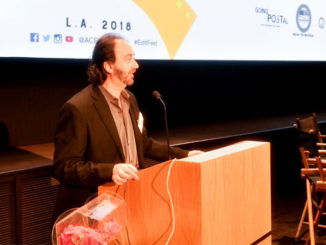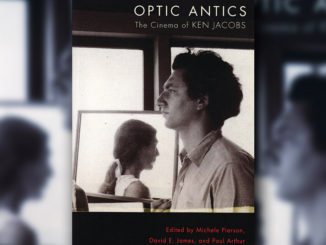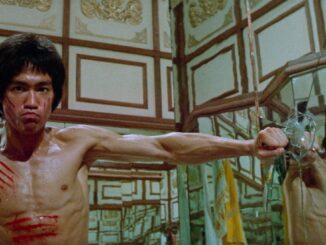
JANUARY 17, 1939–DECEMBER 29, 2024
Picture editor George Folsey, Jr., ACE was perhaps fated to go into the movie business, but few could have foreseen how far he would go.
As the only child of cinematographer George J. Folsey, ASC, whose films include “Meet Me in St. Louis” (1944), “Adam’s Rib” (1949), and “Seven Brides for Seven Brothers” (1954), Folsey grew up during the Golden Age of cinema, but by the time he entered the industry, the studio system had atrophied, the Production Code had collapsed, and multi-hyphenates were in demand. Taking advantage of the changed industry, Folsey teamed up with enterprising young director John Landis. Together, the pair fashioned a slate of the sharpest, sleekest, and shapeliest comedies of modern times, with Folsey filling a variety of roles. He served as editor, co-editor, or producer of every Landis production from “Schlock” (1973) through “Coming to America” (1988), a stretch that included such highlights as “National Lampoon’s Animal House” (1978) and “The Blues Brothers” (1980), which Folsey edited and produced, “An American Werewolf in London” (1981) and “Trading Places” (1983), which Folsey produced.
“My dad was definitely even-keeled,” his son, picture editor Ryan Folsey, ACE said of his father’s unique partnership with Landis. “Nothing really shook him. He was a genius at the politics, and I think John knew that whatever my dad told him was probably the right direction to take. They really just worked off of each other.”
Folsey died on December 29 at age 85 following a case of pneumonia. Although his health had taken a turn for the worse in recent months, the veteran editor was far from retired. “You had to pry him away from his desk set-up at his house,” Ryan Folsey said. “He was still working on shows and cutting and consulting up to the end. It was pretty amazing. He truly loved it.”
Born in Los Angeles to George J. Folsey and his wife Angele, George for a time resisted following in his father’s footsteps. He studied engineering and physics at Pomona College. “Like his mom, he was really good at mathematics,” Ryan Folsey said. Upon graduation, he caught on at KABC-TV where where he began working in the editorial department on news segments — which at least was distinct from his father’s background in the camera department on countless feature films. As it turned out, the “technical,” problem-solving side of postproduction appealed to him. “He was definitely more involved in engineering and going that route in his career,” Ryan Folsey said. “Back in those days, you look at the KEMs and the Moviolas and the way editorial was done, it had such a mechanical process to it and he really thrived.”
Following a stint at MGM, Folsey established himself in independent features. He served as the co-editor (and his father, the cinematographer) of Larry Cohen’s “Bone” (1972) and worked on several Blaxploitation films, including Cohen’s “Black Caesar” (1973). Then came “Schlock,” the first of his films with Landis. “I believe John was a bit younger than my dad,” Ryan Folsey said. “So it was probably nice that he had someone that had established themselves in the industry — someone Landis could look to for advice, yet who all the while let John be John.”
As Ryan Folsey tells it, his father’s pivot from working as an editor-producer on Landis films to serving as a producer and all-around creative collaborator was a logical evolution. “He probably felt like, ‘Hey, I am kind of producing on some of this stuff,’” Ryan Folsey said. “[As an editor], you’re sitting with it every single day, and you’re handling vendors and you’re handling sound and music. I think it was just natural for him to progress in that vein.” Even on those Landis films that Folsey produced but did not edit, he worked closely with editor Malcolm Campbell, ACE and was involved in shaping the final film. “Don’t think for a second he wasn’t still in the editing room,” Ryan Folsey said.
In 1987, Folsey was acquitted by a jury of manslaughter charges that arose from an on-set helicopter accident during the making of a Landis-directed segment of 1983’s “Twilight Zone: The Movie” (on which Folsey was an associate producer). During production in July 1982, Vic Morrow and two child actors died following a helicopter crash caused by the explosives that had been called for in the scene. Landis and others who worked on the film were also acquitted in the same trial.
Ryan Folsey said that his father was haunted by the “Twilight Zone” accident. “Nobody would ever want to go through something like that — it was devastating,” he said, adding that “the only silver lining from the accident was an increased awareness of safety measures on film sets.”
When his collaboration with Landis came to a conclusion with “Coming to America,” which Folsey both co-edited with Campbell and produced, his career remained eclectic in his choice of projects and in the roles he chose. As an executive producer, Folsey’s films included Peter Bogdanovich’s “The Thing Called Love” (1993) and Jonathan Lynn’s “Greedy” (1994), and he continued to edit or co-edit features, big, small, and in-between, including John McTiernan’s “Basic” (2003), Eli Roth’s “Hostel” (2005), the “Pink Panther” remake starring Steve Martin (2006), and Steve Pink’s “Hot Tub Time Machine” (2010). Proud of his ability to salvage projects, he sought to soothe tensions that may have developed in cutting rooms, or between studio executives and creative personnel. “He had such an innate ability to get everyone affiliated with a project back on the same page,” Ryan Folsey said.
Looking back on his career, Folsey was likely proudest of “The Blues Brothers” because of the complexity of editing musical numbers on a KEM, his son said. Ryan Folsey also notes with pride that “Trading Places,” which his father produced, was completed in a record amount of time after principal photography. “Could anybody else have solved that puzzle in that amount of time and for a studio and have it do so well?” he said.
In addition to Ryan, Folsey is survived by his wife Belinda, daughter Erin, and their grandchildren Lucia, Chloe, and Hazel.
— Peter Tonguette






